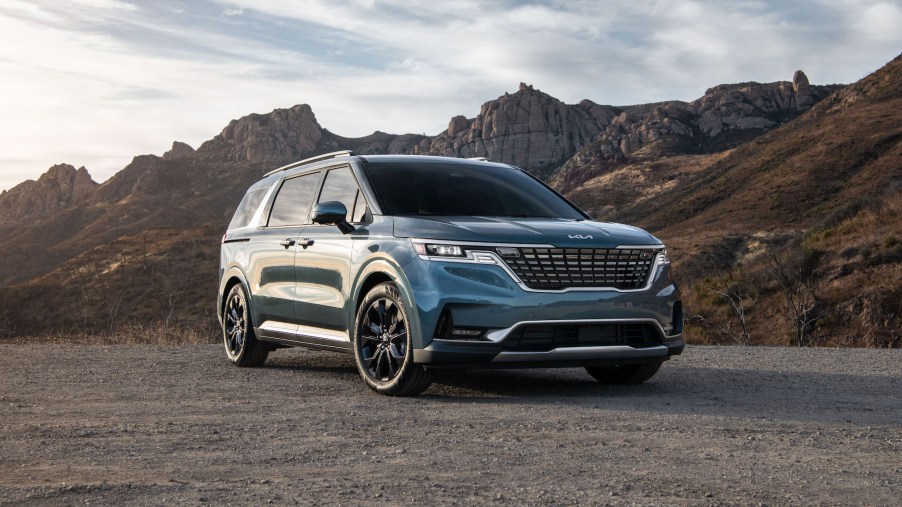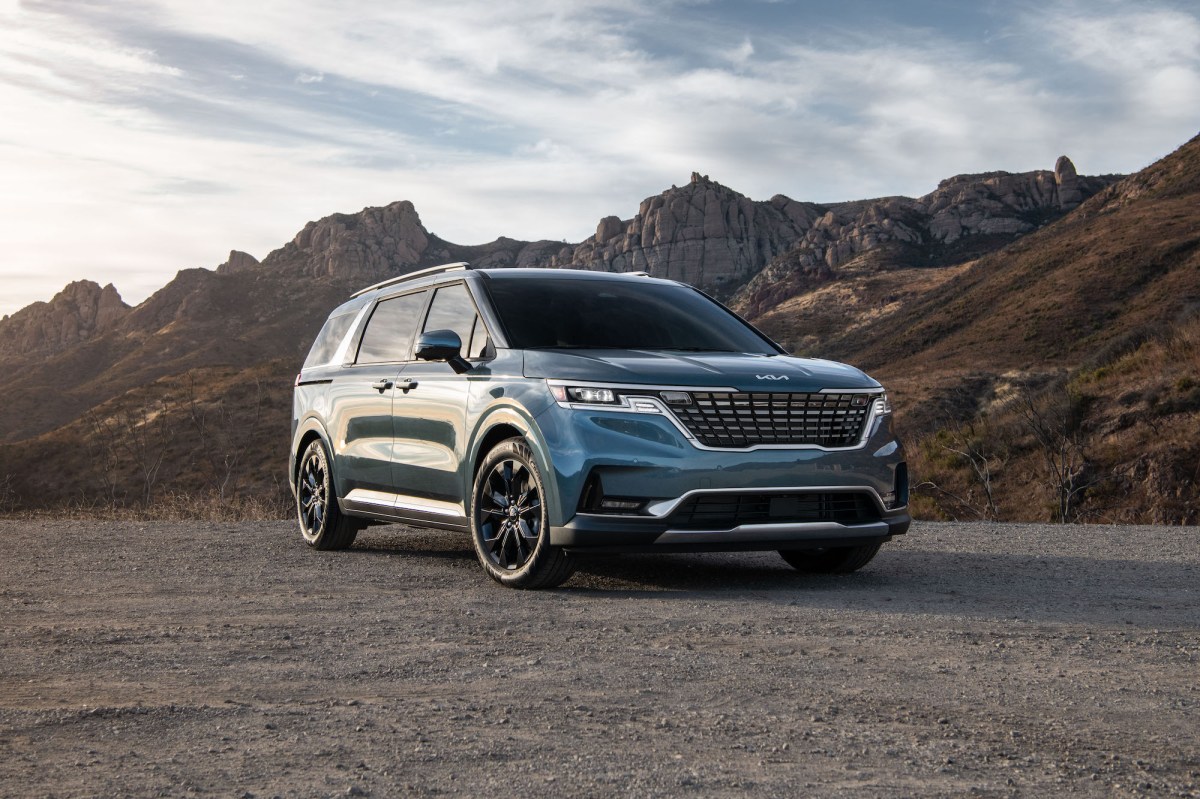
2023 Kia Carnival Safety and ADAS Features: Everything You Need to Know
Advanced driver assistance features can reduce road accidents and the resulting fatalities and injuries. For a family car, this can be very important; hence it’s no surprise that ADAS features are part and parcel of the 2023 Kia Carnival. For buyers considering buying the minivan, the exact package of ADAS features you get depends on the trim level. However, before looking into that, here’s an overview of the 2023 model year minivan.
2023 Kia Carnival overview

Pricing for the 2023 Carnival starts at 32,900, with five trims to choose from. These include the LX, LX Seat Package, EX, SX, and the top-of-the-line SX Prestige. Buyers get the same 3.5-liter V6 regardless of trim, putting out 10 more horses than the 2023 Honda Odyssey at 290 hp. Torque stands at 262 lb-ft. Also, the FWD system and the eight-speed automatic transmission are standard.
Inside the car, you can get up to eight seats, with the various dashboard setups varying depending on trim. For instance, you get an eight-inch infotainment screen with the LX trim. Conversely, buyers of higher-end trims get 12.3-inch dual panoramic displays.
Smartphone connectivity apps are standard for both the Android and iOS platforms. Additionally, if you go for the higher trims, you get a cabin intercom, better speaker systems, and the option of a rear screen entertainment system.
Advanced driver assistance features in the 2023 Kia Carnival
With the 2023 Kia Carnival, you get some advanced driver assistance features as standard, while the rest are available with higher-priced trims. Examples of standard options include safe exit assist and rear occupant alert. The former prevents passengers or drivers from opening the door with unseen motorists approaching. As for the Rear Occupant Alert, it makes it impossible to forget your kids in the back seat.
Other standard ADAS features include lane following and lane keeping assist with lane departure warning. This is in addition to driver attention warning, blind-spot collision-avoidance assist, rear cross-traffic collision avoidance assist, and a rear-view monitor.
Buyers also get electronic stability control, hill start assist control, a tire-pressure monitoring system, traction control, and an anti-lock braking system.
Concerning the forward collision assist, lower trims can detect pedestrians while higher trims add cyclists and junctions to the equation. You see a similar trend with the park distance warning system with higher trims of the Kia minivan getting an upgraded version.
Also notable is that the LX and LX Seat Package don’t have navigation-based smart cruise control and highway driving assist, while the other trims do. Finally, the surround view monitor and the reverse version of the parking collision-avoidance assist are exclusive to the SX and SX Prestige trims.
What is ADAS?
As implied by the name, advanced driver assistance features are there to assist the driver and use various technologies for the same. In the example of lane keeping assist, a camera monitors the vehicle’s position relative to the lane markings on the road. The car will then steer you back to the middle if you get too close to the edge.
In addition to cameras, vehicles also use a variety of technologies such as RADAR, SONAR, LiDAR, and GPS/GNSS sensors.
The ADAS system may provide you with information or take automatic action using the collected data. The lane-keeping assist feature steering you back into the middle of the road is an example of automatic action, and features like this have “assist” in the name.
If all the vehicle does is alert the driver of possible problems, then you have the term “warning” in the name, e.g., lane departure warning. By combining systems that alert the driver and take action, Aptiv notes that you get an active car safety system.
ADAS systems can sometimes control speed, steering, and braking. However, the driver is still fully responsible for driving the vehicle and must be engaged.
Also, ADAS systems are a big step toward fully automated self-driving cars.


